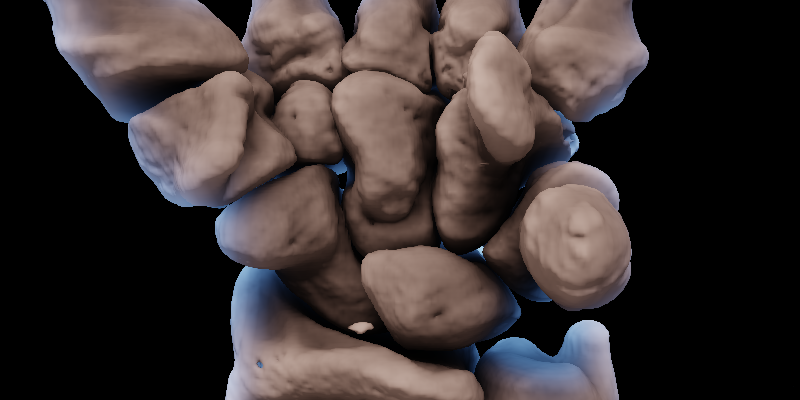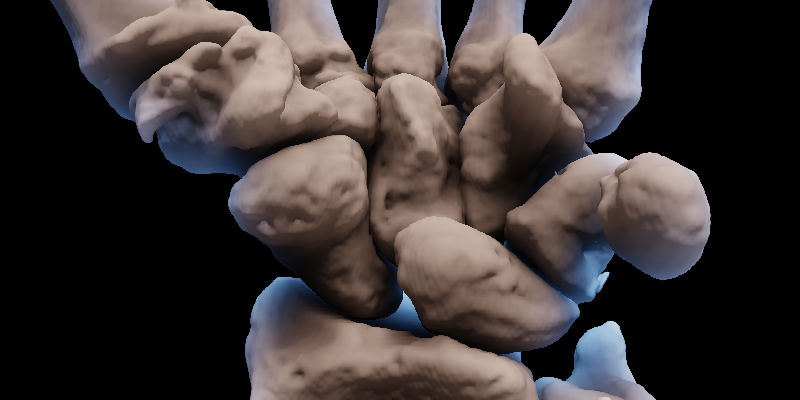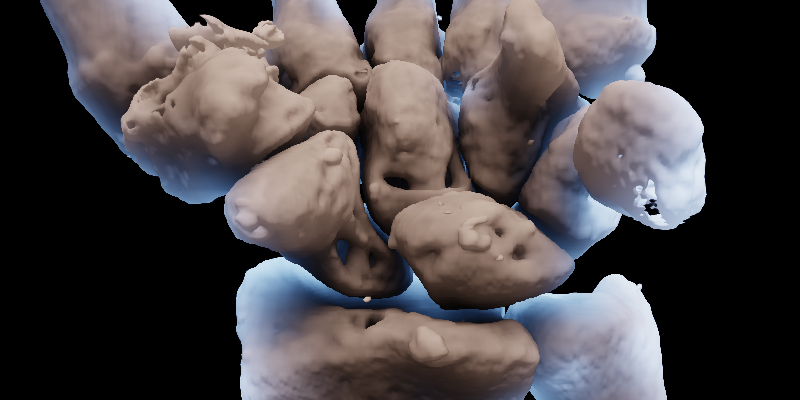Many different factors may affect the bone structure. One is demineralization, which will lower the density of bones by losing calcium from bones and destroys the structure of the bone. Cancer will also generate erosions but produces strong PET signal, erosions are visible in CT scans but not in PET scans. Rheumatoid-arthritis cause erosions and also produce high PET signal. The small bones of the wrist and fingers are typically affected by the disease early and give a good picture of disease status and progression. Thus the shape visualization is critical to observers for diagnosis.
In this study we present the use of global illumination in volume visualizations of high resolution Positron Emission Tomography/X-ray Computed Tomography (PET/CT) wrist data for the evaluation of response to treatment in arthritis. The major anatomical imaging markers associated with RA are bone erosion and joint space narrowing (JSN). Robust tools with the ability to detect, visualize and prospectively quantify bone erosion or JSN in 3D are very limited in the clinical field and the proposed technique has the potential to serve as an important diagnostic tool for clinicians. New aggressive biologic treatments have become available to treat RA but early differentiation of responders to the drugs from non-responders is critical to spare patients from the resulting disability, therapy side-effects, and cost. Advanced methods for change analyses like what we propose have potential to improve detectability and consistency compared to conventional methods.
Paper:
Lin Zheng, Abhijit J. Chaudhari, Ramsey D. Badawi, Kwan-Liu Ma.
Using Global Illumination in Volume Visualization of Rheumatoid Arthritis CT Data. IEEE Computer Graphics and Applications. 2014 Nov-Dec; 34(6):16-23 pdf
Video:
User Study
Personnel:

Computer Science, UC Davis

BME, UC Davis

UCMC, UC Davis

Computer Science, UC Davis








